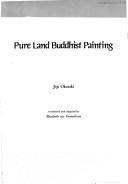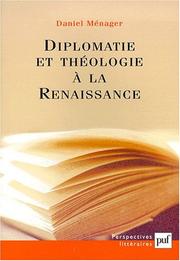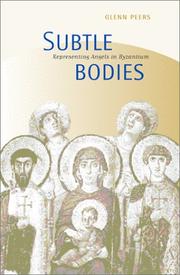| Listing 1 - 9 of 9 |
Sort by
|
Book
Year: 1990 Publisher: Nara-shi : Nara Kokuritsu Hakubutsukan,
Abstract | Keywords | Export | Availability | Bookmark
 Loading...
Loading...Choose an application
- Reference Manager
- EndNote
- RefWorks (Direct export to RefWorks)
Buddhist painting --- Buddhism in art --- Buddhism --- Folklore

ISBN: 0870112872 Year: 1977 Publisher: Tokyo New York Kodansha International and Shibundo
Abstract | Keywords | Export | Availability | Bookmark
 Loading...
Loading...Choose an application
- Reference Manager
- EndNote
- RefWorks (Direct export to RefWorks)
Buddhist painting --- Painting, Japanese --- Pure Land Buddhism in art.
Book
ISBN: 0824026853 Year: 1977 Publisher: New York (N.Y.) : Garland,
Abstract | Keywords | Export | Availability | Bookmark
 Loading...
Loading...Choose an application
- Reference Manager
- EndNote
- RefWorks (Direct export to RefWorks)
Mahayana Buddhism in art. --- Buddhist sculpture --- Sculpture, Sinhalese.
Book
ISBN: 1803272341 1803272333 9781803272337 9781803272344 Year: 2022 Publisher: Oxford : Archaeopress Publishing Ltd,
Abstract | Keywords | Export | Availability | Bookmark
 Loading...
Loading...Choose an application
- Reference Manager
- EndNote
- RefWorks (Direct export to RefWorks)
"The ancient Buddhist art of Gandhāra was rediscovered from the 1830s and 1840s onwards in what would become the North-West Frontier of British India. By the end of the century an abundance of sculptures had been accumulated by European soldiers and officials, which constituted the foundations for a new field of scholarship and internationally celebrated museum collections. Both then and since, the understanding of Gandhāran art has been impeded by gaps in documentation, haphazard excavation, forgery, and smuggling of antiquities. Consequently, the study of Gandhāran archaeology often involves the evaluation and piecing together of fragmentary clues. In more subtle ways, however, the modern view of Gandhāran art has been shaped by the significance accorded to it by different observers over the past century and a half. Conceived in the imperial context of the late nineteenth century as 'Graeco-Buddhist' art - a hybrid of Asian religion and Mediterranean artistic form - Gandhāran art has been invested with various meanings since then, both in and beyond the academic sphere. Its puzzling links to the classical world of Greece and Rome have been explained from different perspectives, informed both by evolving perceptions of the evidence and by modern circumstances. From the archaeologists and smugglers of the Raj to the museums of post-partition Pakistan and India, from coin-forgers and contraband to modern Buddhism and contemporary art, this fourth volume of the Classical Art Research Centre's Gandhāra Connections project presents the most recent research on the factors that mediate our encounter with Gandhāran art."
Art, Gandhara --- Buddhism in art. --- Gandhara (Pakistan and Afghanistan) --- Antiquities. --- Gandhara art --- Gandhara (Pakistan)
Book
ISBN: 9882207448 1283016893 9786613016898 9882205828 9789882205826 9789882207448 9781283016896 6613016896 9789622091252 9622091253 Year: 2010 Publisher: Hong Kong : Hong Kong University Press,
Abstract | Keywords | Export | Availability | Bookmark
 Loading...
Loading...Choose an application
- Reference Manager
- EndNote
- RefWorks (Direct export to RefWorks)
The Buddha's nirvana marks the end of the life of a great spiritual figure and the beginning of Buddhism as a world religion. Surviving Nirvana is the first book in the English language to examine how this historic moment was represented and received in the visual culture of China, of which the nirvana image has been a part for over 1,500 years. --Mining a selection of well-documented and well-preserved examples from the sixth to twelfth centuries, Sonya Lee offers a reassessment of medieval Chinese Buddhism by focusing on practices of devotion and image-making that were inspired by the Buddha
Art, Medieval --- Buddhist art and symbolism --- Buddhism and art --- Buddhism in art. --- Art and Buddhism --- Art --- Buddhist art --- Buddhist symbolism --- Lamaist symbolism --- Symbolism and Buddhist art --- Symbolism --- Medieval art --- Themes, motives. --- History --- Gautama Buddha --- Art. --- Enlightenment. --- Buddhism in art --- S17/0500 --- S17/0530 --- Themes, motives --- China: Art and archaeology--Buddhist art: general --- China: Art and archaeology--Buddhist art: iconography --- Gautama, --- Fo-tʻo --- Buddha, --- Gotama, --- Shih-chia-mou-ni --- Shijiamuni --- Sākyamuni --- Sŏkka --- Buddha --- Sŏgamoni --- Shākyamuni --- Shakamuni-butsu --- Shakuson --- Shittaruta --- Shih-chia Ju-lai --- Phraphutthačhao --- Pultʻa --- Putta --- Siddhartha Gotama --- Gotama, Siddhartha --- Budda --- Śākya-thup-pa --- Shi-chia-mu-ni --- Siddhartha Gautama --- Gautama, Siddhartha --- Bhayavat --- Tathagata --- Siduhat Kumāraya --- Puttar --- Puttan̲ --- Kautama Puttar --- Puttapirān̲ --- Cittārtta Kautama Puttar --- Siddhārtha, --- Tất Đạt Đa --- בודהא --- 釈迦 --- 释迦牟尼 --- 釋迦牟尼 --- Sitthattha Khōtama --- Khōtama, Sitthattha --- Gotama, Siddhatta --- Buddhism and art. --- Buddhist art and symbolism.
Book
ISBN: 9783770546688 9783846746684 3846746681 Year: 2009 Publisher: Brill Academic Publishers
Abstract | Keywords | Export | Availability | Bookmark
 Loading...
Loading...Choose an application
- Reference Manager
- EndNote
- RefWorks (Direct export to RefWorks)
Die Hermeneutik des Boten füllt nicht nur zwei Forschungslücken – weder zu Rilke noch zu Klee gibt es eine umfassende Untersuchung zur Figur des Engels, welche in beider Werk eine zentrale Rolle spielt –, sondern sie leistet auch auf der Basis feinsinniger Bild- und Gedichtinterpretationen den Nachweis, dass die Engel Rilkes und Klees trotz ihrer divergierenden inhaltlichen Ausgestaltung aufgrund ihrer Verwendung in derselben Funktion miteinander vergleichbar sind. Beide, Maler und Dichter – so die zentrale These der Arbeit –, verwenden den Engel als Denkfigur, mit deren Hilfe die je eigene Ästhetik bzw. Poetik sowie das künstlerische Selbstverständnis reflektiert werden können. Es wird deutlich, dass die Figur des Engels ein für die ästhetischen/poetischen Probleme der Moderne, welche sich im Werk Rilkes und Klees spiegeln, besonders geeignetes Ausdrucksmedium sind.
Angels in art. --- Angels in art --- Angels in literature --- Angels --- Angels (Buddhism) in art --- Klee, Paul, --- Rilke, Rainer Maria, --- Rilke, René Maria Cäsar, --- Li-erh-kʻo, --- Rielke, Rainer Maria, --- Rilkʻe, Rainŏ Maria, --- Rilḳeh, Rainer Mariyah, --- Rilke, Reiner Marie, --- רילקה, ראינר מריה, --- רילקה, ריינר מריה --- רילקה, ריינר מריה, --- רילקה, רינר מריה --- רילקה, רינר מריה, --- רילקה, רץ מ. --- רילקה, ר.מ --- קליי, פאול, --- Criticism and interpretation. --- Angels in literature. --- リルケ, ライナー マリア --- Rilke, Rainer Maria
Book
ISBN: 9786155053214 9786155053221 9781441694676 1441694676 9786155053238 6155053235 6155053219 6155053227 Year: 2011 Publisher: Budapest ; New York : Central European University Press,
Abstract | Keywords | Export | Availability | Bookmark
 Loading...
Loading...Choose an application
- Reference Manager
- EndNote
- RefWorks (Direct export to RefWorks)
Supernatural phenomena and causalities played an important role in medieval society. Religious practice was relying upon a set of cult images and the sacral status of these depictions of divine or supernatural persons became the object of heated debates and provoked iconoclastic reactions.The miraculous intervention of saints or other divine agents, the wondrous realities beyond understanding, or the manifestations of magic attributed to diabolic forces, were contained by a variety of discourses, described and discussed in religion, philosophy, chronicles, literature and fiction, and also in a large number of pictures and material objects. The nine essays in this collection discusses how supernatural phenomena – especially angels and devils – found visual manifestation in Latin and Eastern Christianity as well as Judaism in the late medieval, early renaissance period.
Christian religion --- Jewish religion --- Iconography --- Devil --- anno 500-1499 --- Jewish art and symbolism. --- Christian art and symbolism. --- Supernatural in art. --- Devil in art. --- Angels in art. --- Angels --- Angels (Buddhism) in art --- Art, Christian --- Art, Ecclesiastical --- Arts in the church --- Christian symbolism --- Ecclesiastical art --- Symbolism and Christian art --- Religious art --- Symbolism --- Symbolism in art --- Church decoration and ornament --- Jewish symbolism and art --- Jewish art --- Jewish arts --- Art and religion, Judaism, Late medieval, Material culture, Religion, Renaissance, Supernatural.

ISBN: 2130509754 Year: 2001 Volume: *22 Publisher: Paris Presses universitaires de France
Abstract | Keywords | Export | Availability | Bookmark
 Loading...
Loading...Choose an application
- Reference Manager
- EndNote
- RefWorks (Direct export to RefWorks)
History of civilization --- anno 1400-1499 --- anno 1500-1599 --- Ambassadeurs dans l'art --- Ambassadeurs dans la litérature --- Ambassadeurs in de kunst --- Ambassadeurs in de literature --- Ambassadors in art --- Ambassadors in literature --- Angels in art --- Angels in literature --- Anges dans l'art --- Anges dans la littérature --- Engelen in de kunst --- Engelen in de literatuur --- Theology --- Diplomacy --- Renaissance --- Angels --- Théologie --- Diplomatie --- Anges --- History --- Histoire --- Angels in art. --- Angels in literature. --- Arts, Renaissance. --- Diplomacy in literature. --- European literature --- History and criticism. --- 235.13 --- 341.7 --- 27 "15" --- Zending van de engelen --- Diplomatiek recht --- Kerkgeschiedenis--?"15" --- 341.7 Diplomatiek recht --- 235.13 Zending van de engelen --- Théologie --- Arts, Renaissance --- Diplomacy in literature --- Renaissance arts --- Angels (Buddhism) in art --- History and criticism --- 1450-1600 (Renaissance) --- Themes, motives --- Painting [Renaissance ] --- DIPLOMATIE --- HISTOIRE --- 16E SIECLE

ISBN: 0520224051 9780520224056 Year: 2001 Volume: 32 Publisher: Berkeley (Calif.) : University of California press,
Abstract | Keywords | Export | Availability | Bookmark
 Loading...
Loading...Choose an application
- Reference Manager
- EndNote
- RefWorks (Direct export to RefWorks)
Iconoclasm --- Angels --- Angels in art --- Angels in literature --- Church history --- History --- Biblical teaching --- Orthodox Eastern Church --- Byzantine Empire --- Angels in art. --- Angels in literature. --- Biblical teaching. --- History. --- Anges dans l'art --- Anges dans la littérature --- Engelen in de kunst --- Engelen in de literatuur --- 235.1 --- 75.033.2 --- -Angels --- -Angels in art --- Angels (Buddhism) in art --- 75.033.2 Schilderkunst van Byzantium; Oud-Armenië; Oud-Rusland. Ikonen --- Schilderkunst van Byzantium; Oud-Armenië; Oud-Rusland. Ikonen --- 235.1 Goede engelen --- Goede engelen --- Christianity --- Ecclesiastical history --- History, Church --- History, Ecclesiastical --- Angelology --- Cherubim --- Cherubs (Spirits) --- Divine messengers --- Seraphim --- Spirits --- Idols and images --- Worship --- -History --- -Church history --- Iconoclasme --- Anges --- Anges dans la littérature --- Eglise --- Bible --- Histoire --- Empire byzantin --- Church history. --- Histoire religieuse --- Middle Ages, 600-1500 --- Middle Ages, 500-1500 --- Engelen --- Iconoclasm - Byzantine Empire - History --- Angels - Biblical teaching --- Church history - Middle Ages, 600-1500 --- Byzantine Empire - Church history
| Listing 1 - 9 of 9 |
Sort by
|

 Search
Search Feedback
Feedback About UniCat
About UniCat  Help
Help News
News